
Being environmentally conscious is not all about plastic bags; it’s about making everyday choices that will — quite literally — determine our success or failure as a species. We can be more conscious about reducing pollution, protecting wildlife, conserving natural resources and take other actions that can help slow the rate of climate change.
Everyone can make a difference, particularly when smart environmental choices become a habit and perhaps even begins influencing others into taking similar actions. Doing the right thing for the future of life on Earth can even have immediate personal benefits. It can tap into your creativity, can get you more engaged with your community and the world, and may contribute to a healthier lifestyle.
We need to reduce the amount of trash we create, and to reuse or repurpose consumer goods rather than throwing them away. United States is among the countries in the world that produce the most waste.
It is not possible to offer an exhaustive list of things you can do to help protect the environment or rank them based on impact, but here is a short list of relatively easy things you can do to shrink your carbon footprint, lead to more green actions, and initiate change on a larger scale, so there are no more climate change effects that can’t be stopped.
To compile a list of ways people can reduce their environmental impact, 24/7 Tempo reviewed numerous scientific studies on sources of greenhouse gases and consulted dozens of non-profit organizations working to raise awareness about ethical consumerism such as Green America and government agencies such as the Environmental Protection Agency (EPA).
Click here to read about 30 ways to make your life more environmentally friendly.
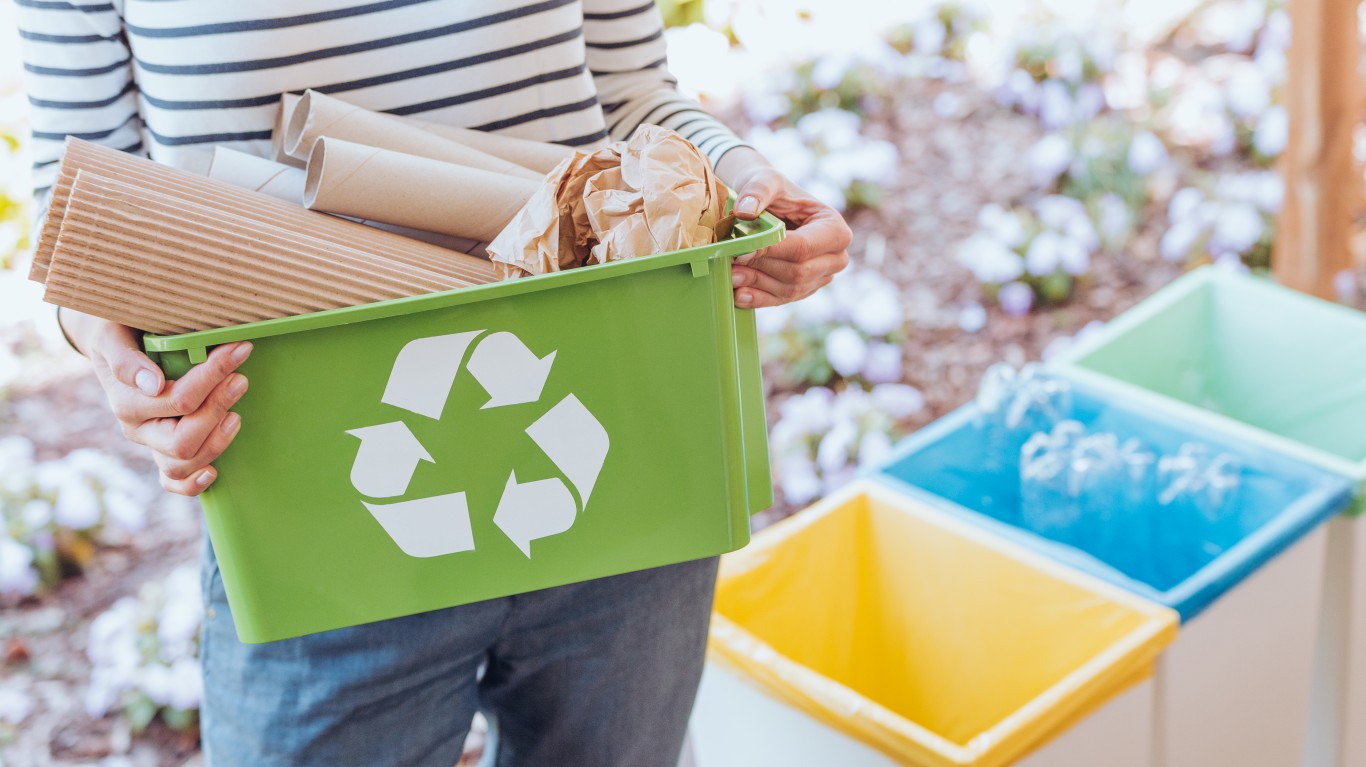
1. Recycle
Recycling conserves natural resources, reduces pollution and saves energy. Recycling involves sorting and cleaning up trash to produce “secondary materials” — mainly glass, paper, metal and plastic — for reuse in products. Recycled aluminum, for example, is a particularly valuable resource; manufacturing using recycled aluminum is 92% more efficient than when unused raw materials are used, according to the Aluminum Association. About 40% of the country’s aluminum supply comes from recycling, but we are still throwing away nearly $1 billion worth of aluminum cans that could have been recycled every year.
[in-text-ad]

2. Turn down the bag
Plastic bags pose ecological problems. They take hundreds of years to decompose and pose a particular threat to wildlife. Hundreds of thousands of marine mammals die every year after mistaking plastic bags, which are laced with chemicals, for food. Many animals get entangled in plastic bags and suffocate.
A sound approach to retail bags is to decline them when your purchase is otherwise carriable or bring your own bags. Use and reuse all those bags — paper, plastic, cloth — that have been accumulating in the closet over the years — whether or not they are designed to be “reusable.” If they become too grubby to carry your new purchases, use them to line waste cans or for picking up litter. And, ultimately, dispose of them properly — recycle them if you can.
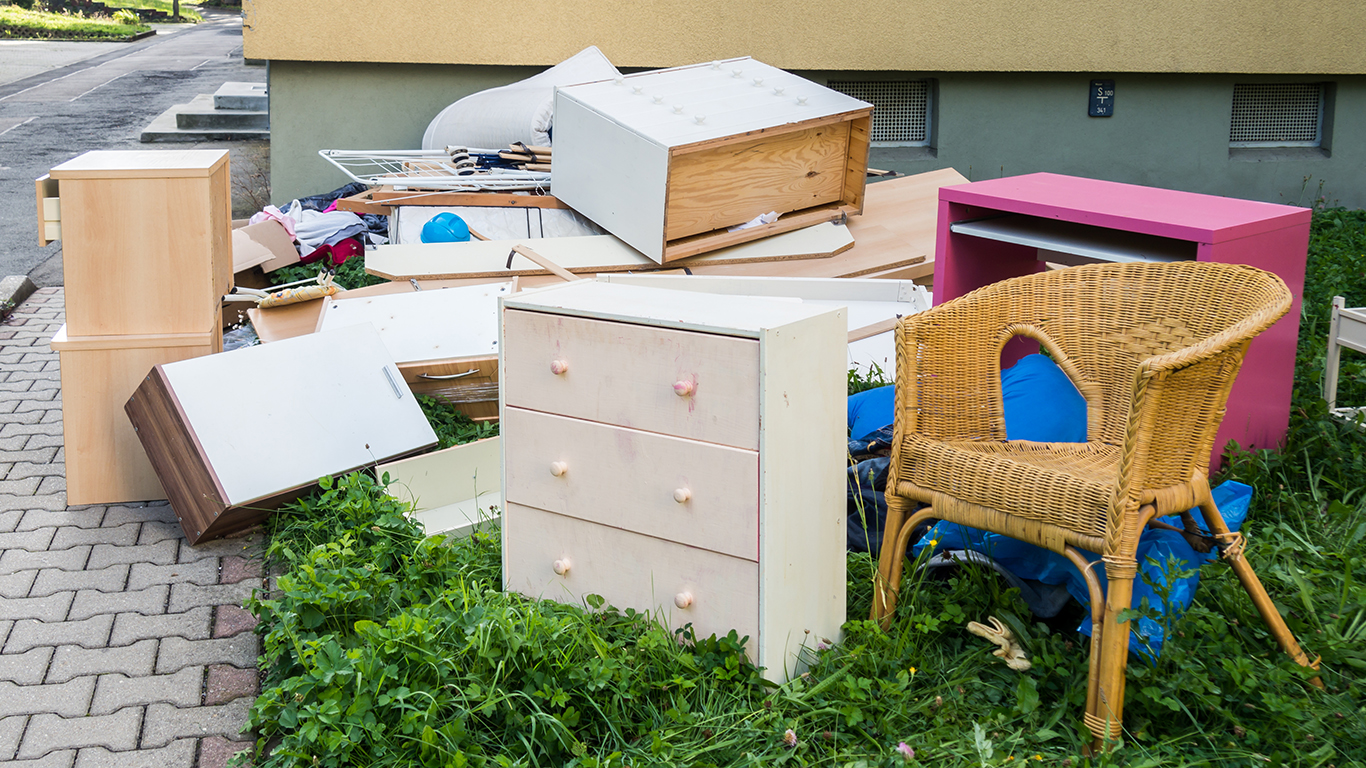
3. Buy only what you will use
Americans are huge consumers of cars, food, furnishings, household products, recreational equipment, and electronics — and we buy much more than we need with many of our consumer purchases getting very little use. Excessive personal consumption of goods means higher direct and indirect costs to the environment, including the energy used and pollution emitted in the extraction of natural resources, and in the manufacturing, transportation, and disposal of goods.
These costs can be substantially reduced by avoiding impulse buying and making a realistic assessment of need before making a purchase. When you do have to buy goods, find durable alternatives with the smallest amount of packaging and the lowest possible carbon footprint and keep them in good repair.

4. Buy second hand
Use eBay, Craigslist or other means to buy used items, particularly durable goods that are needed for a limited time, like nursery furniture. Second-hand goods can be nearly as attractive and often just as functional as brand new purchases, and giving a household item a second life cuts its carbon footprint in half. A third or fourth life is even better.
[in-text-ad-2]
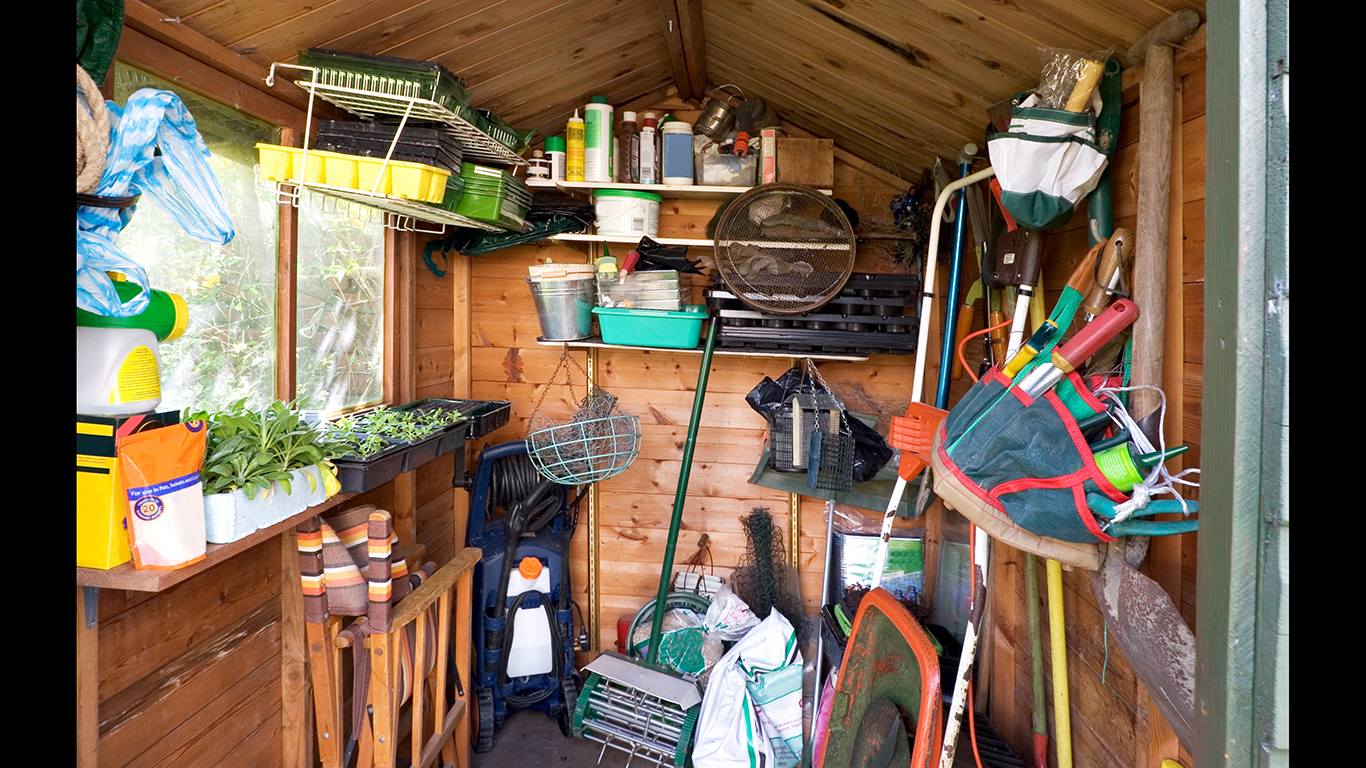
5. Don’t invest in idle equipment
You are wasting money and natural resources used to produce them when you buy items you won’t regularly need. When the equipment, tools, or party supplies that you need once in a great while are not available through friends, rent them from a specialty rental business or a home improvement store. For those items you already have in the tool shed that you don’t regularly depend on, let friends and family know you are happy to share. Use block parties and everyday interactions to initiate a sharing culture in your neighborhood.

6. Donate used goods
Donation is a particularly positive alternative to throwing away used consumer goods in the trash. Give your used clothing, appliances, and furniture to GoodWill, the Salvation Army, or a local church; computers to schools or needy families; and building materials and tools to Habitat for Humanity. Of course, these are just a few suggested organizations and any organization will do. In addition to the environmental benefits of giving these items a second life, you are helping others and may be eligible for a tax deduction.
[in-text-ad]
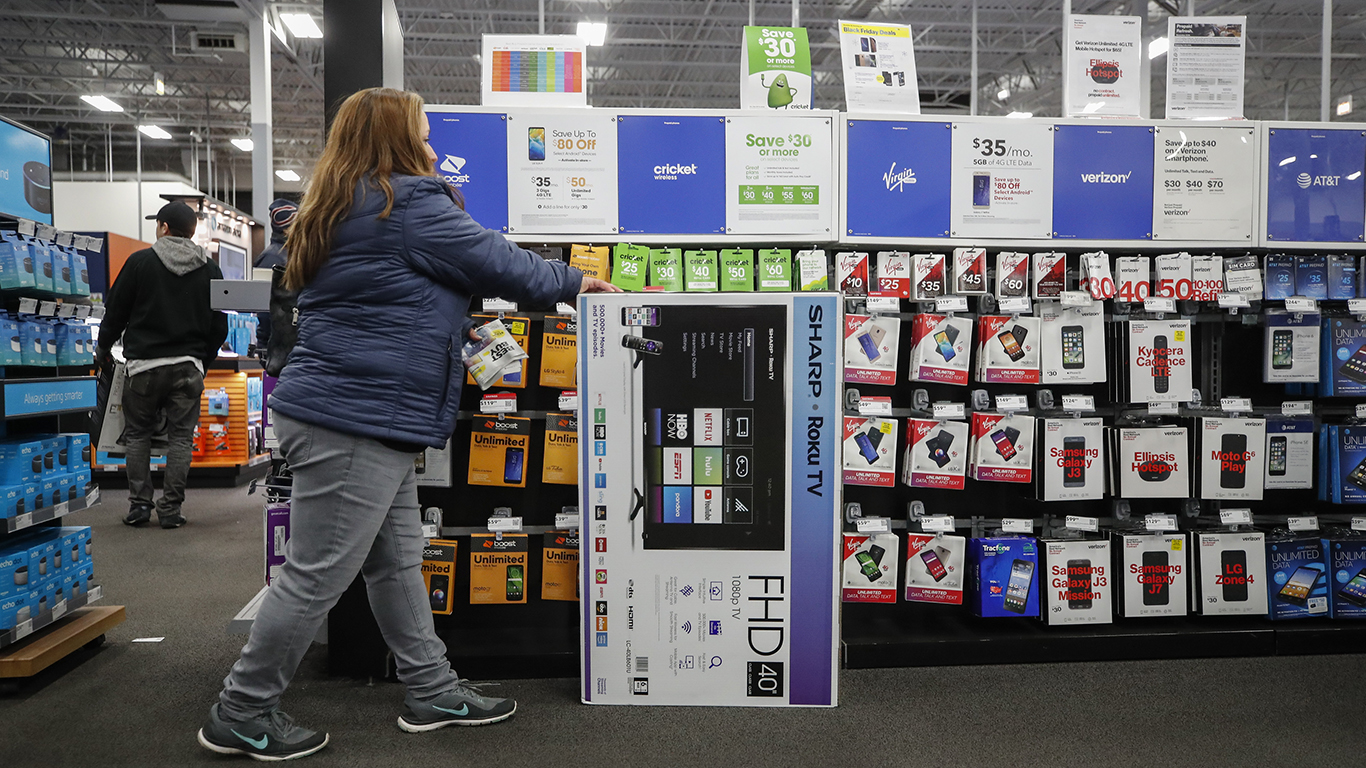
7. Buy products with less packaging
The waste landfills are bulked up with consumer product packaging. Containers and packaging made up the largest portion of municipal waste at almost 78 million tons, or nearly 30%, according to the EPA. Slightly more than a third gets recycled, but huge amounts end up in landfills. Packaging also adds significantly to both the cost and carbon footprint of consumer products.
When it’s not possible to avoid packaging, reuse containers, polystyrene (styrofoam) fillers, and bubble wrap, or see if your local shipping service can use them. The third best alternative, after reducing and reusing, is recycling.

8. Avoid disposable products
Paper and plastic plates and utensils, disposable diapers, paper towels and napkins, cheap plasticware, and other non-durable consumer goods (goods designed to last for a short period of time) make up about 20% of America’s waste stream, which amounted to 50 million tons in 2015, according to the EPA.
A great concern are the greenhouse gas emissions that result from these items manufacture and disposal. Store away a quantity of durable, bargain-priced dishes, flatware, and glassware for parties and picnics. Use cloth napkins, cloth diapers, cloth rags, rechargeable batteries, durable razors, and refillable coffee thermoses for take-out coffee.
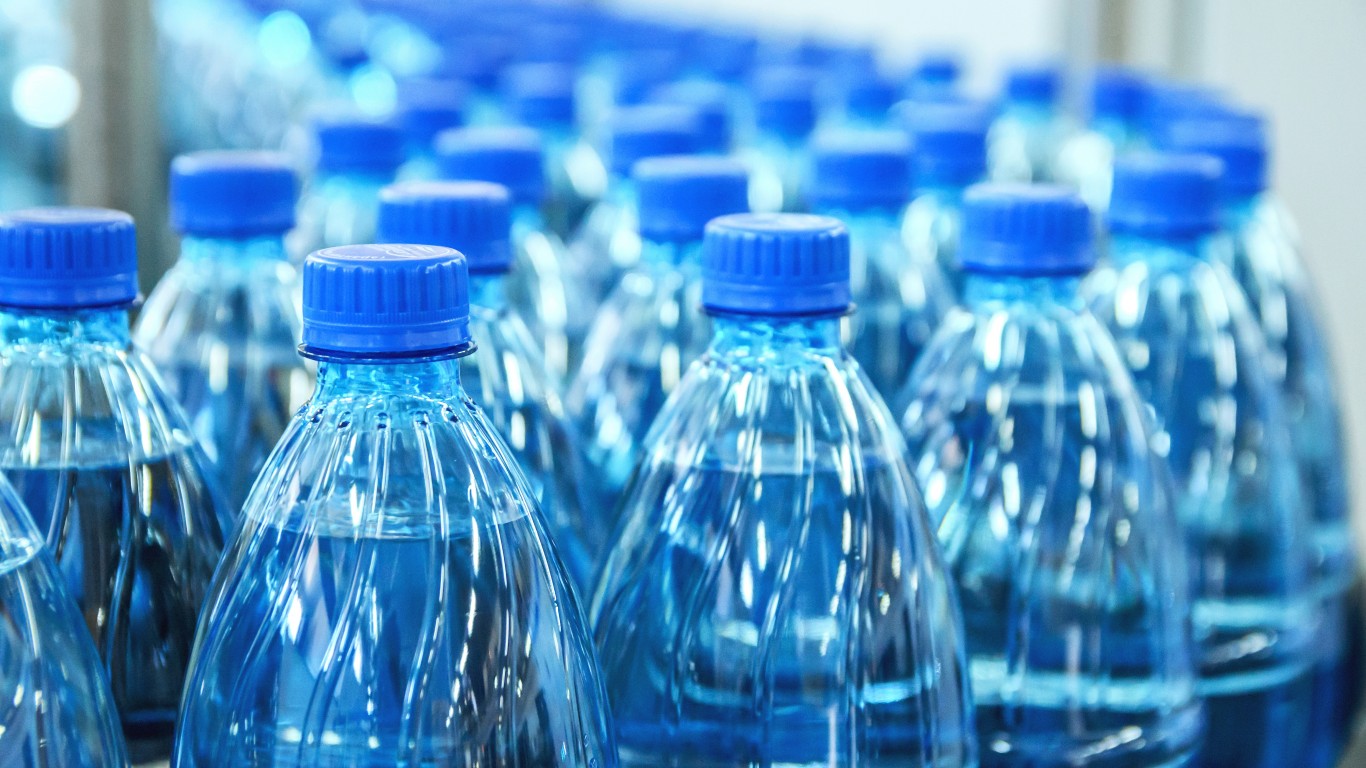
9. Kick the bottled water habit
Americans consumed 13.7 billion gallons of bottled water in 2017, beating carbonated drinks for a second year in a row. Though America’s tap drinking water supplies are generally clean and have to meet EPA standards for potability, it’s the convenience of bottled water that makes it so popular. And consumption continues to grow as consumers move away from sugary drinks in pursuit of better health and still use bottled water to the detriment of environmental health.
According to researchers from the Pacific Institute in Oakland, California, energy required to produce, transport, and chill bottled water requires up to 2,000 times the energy required to produce tap water. In addition, plastic bottles can take 450 years or more to decompose. So, yes, drink plenty of water for good health, but use a reusable water bottle or simply a glass as you pour water from your tap.
[in-text-ad-2]

10. Upcycle
Repurpose items that still have life in them. The internet is full of crafty ideas for reusing waste materials, from high concept artistic statements — like a chandelier from bicycle parts, an aquarium from an upright piano, or a pool table from classic car — to simple DIY projects like turning plastic bottles into planters, wine bottle corks into bath mats, and various containers into toy organizers. These kinds of reuses do not remove a large percentage of material from the waste stream, but, to the extent the reimagined objects take the place of new purchases, they save the energy and reduce the greenhouse gas emissions required for their manufacture.
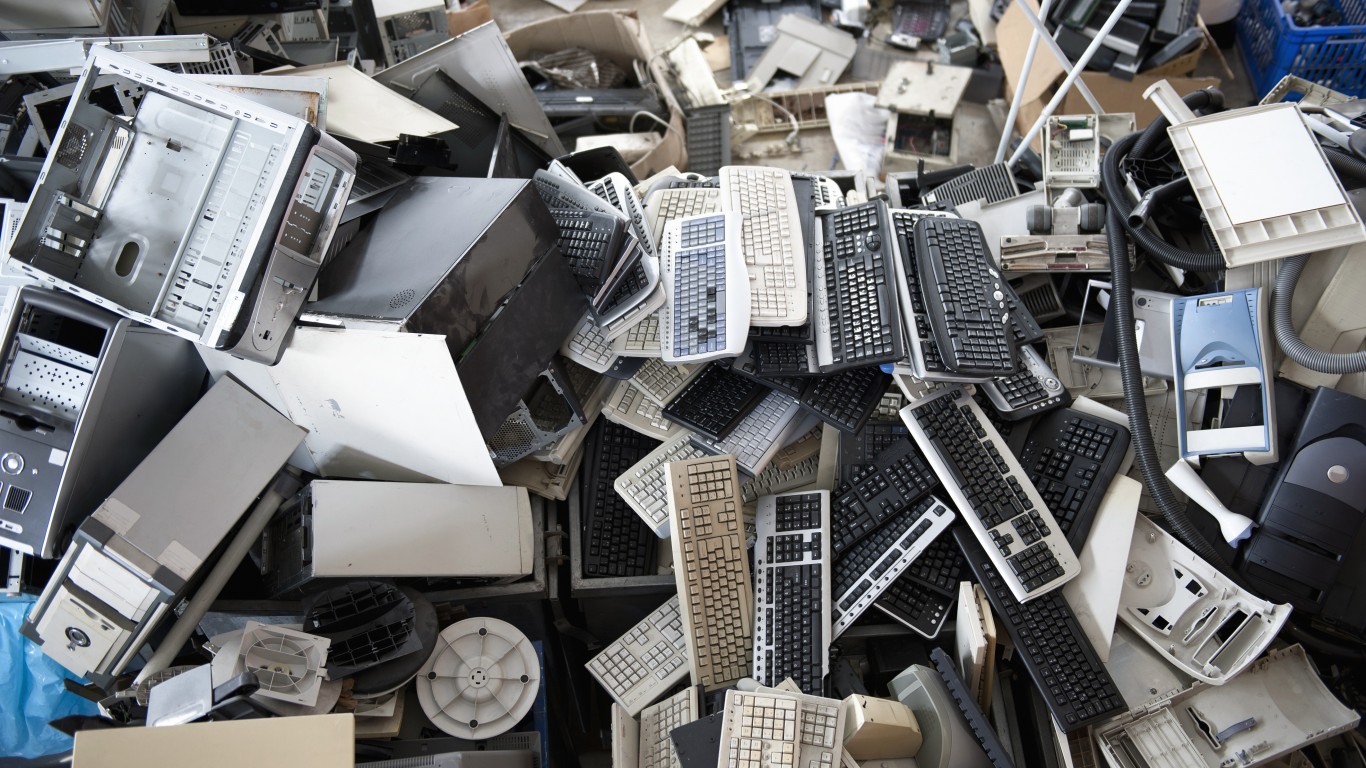
11. Give new life to old electronics
The world’s output of discarded electronic devices — known as e-waste — reached nearly 45 million metric tons in 2016, according to a report by United Nations Environment Program. Electronics require a lot of water, energy, and valuable resources in their manufacture, so their reuse and recycling are particularly critical to environmentally-sound waste management.
If your TV, computer, cell phone or other consumer product containing electronics still works, give it to someone who can use it. There are nonprofits that specialize in the charitable redistribution of computers and companies that refurbish electronics for resale. If your electronic device is no longer serviceable, there are many recyclers who are interested in the valuable metals it contains.
[in-text-ad]
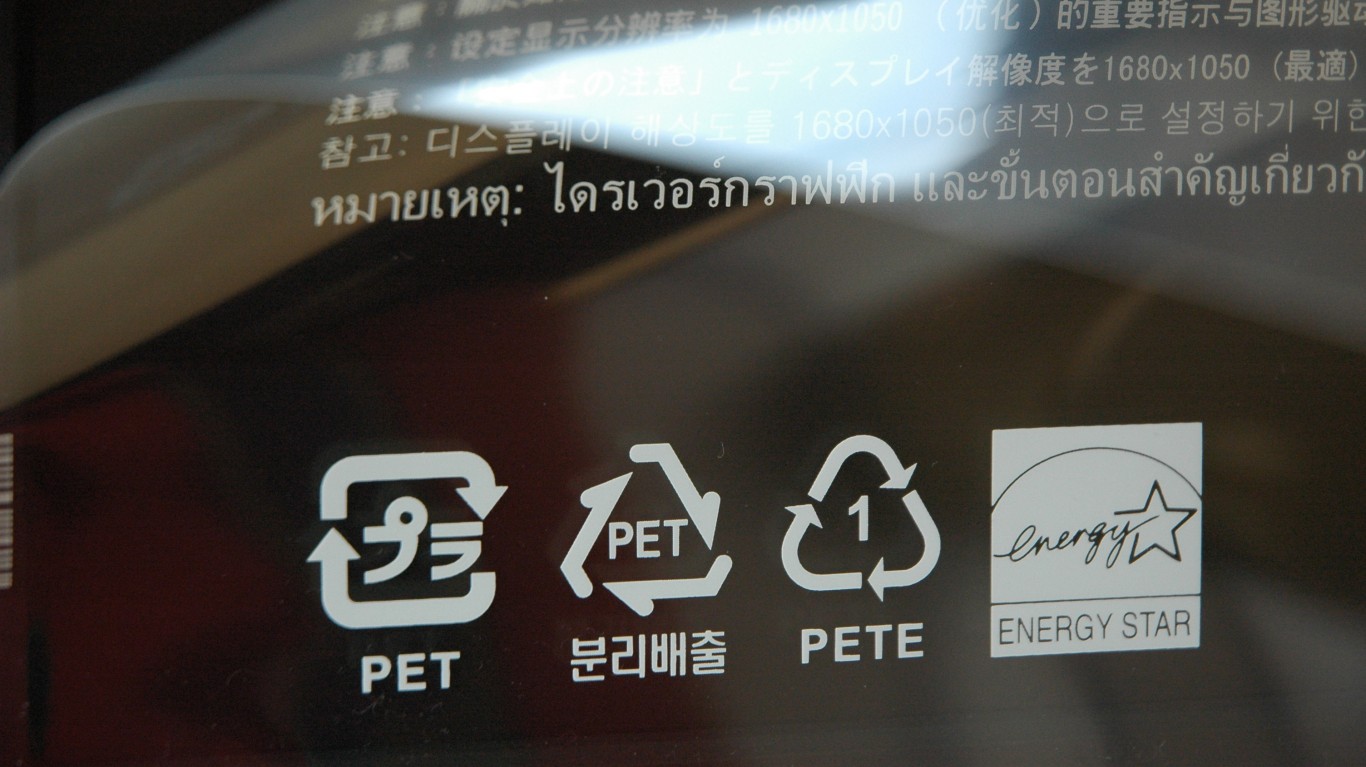
12. Upgrade to a green computer
When you are ready to buy a new computer, buy one with an Energy Star label to save 35%-65% in energy use, and consider a laptop, which uses much less energy than a desktop computer. Donate your old computer rather than recycling it. In terms of greenhouse gas emissions, reusing just one computer with a CRT monitor, as opposed to buying a new one, keeps 1,333 pound of carbon dioxide out of the atmosphere.

13. Invest in a clothesline
Your clothes dryer is one of the largest energy users in the home, and, for the average family emits over a ton of carbon a year. Air-drying can reduce the average household’s carbon footprint by 2,400 pounds a year, according to Green America, a non-profit organization. Many retail outlets sell racks and well-designed accessories for indoor drying. When you do use your dryer, use the setting that provides an automatic shut-off when your clothes are no longer damp. Use just enough energy to get the laundry dry. Be aware that you will lose energy if you add wet clothes to a load that is already partially dry.

14. Switch out your light bulbs
LED lights use 75% less energy to deliver the same amount of light as incandescents, and LED bulbs last 25 times longer. LED holiday string lights are not only more energy efficient and much cheaper over time, they also emit less heat (and therefore safer) and more durable. According to the U.S. Department of Energy, by 2027, the widespread use of LED lighting could save $30 billion in energy costs and reduce the use of electricity by the equivalent of 44 1,000-megawatt power plants.
[in-text-ad-2]
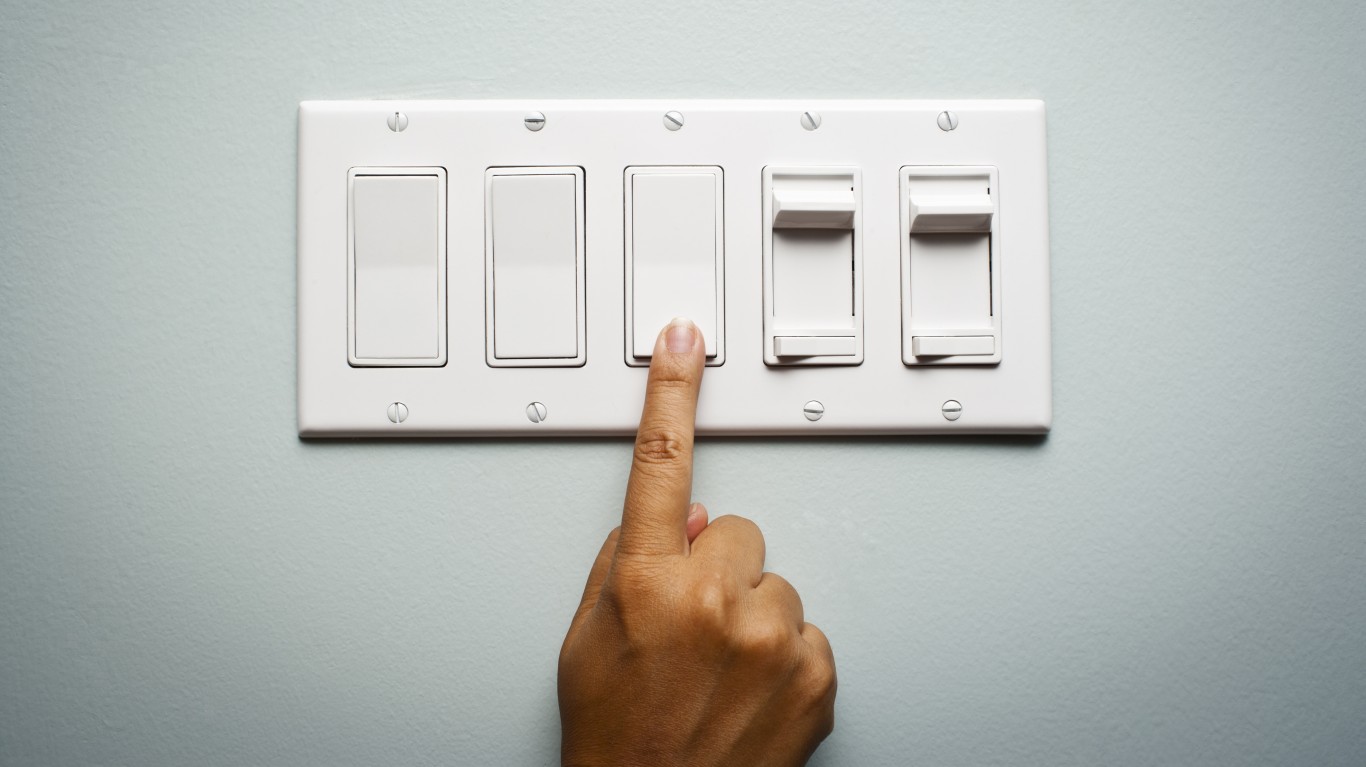
15. Shut off lights
The cost of keeping a single light bulb on doesn’t amount to much on an hourly basis: using a 60-watt bulb for one hour requires 0.06 kilowatt hours of electricity, costing about 1.2 cents if your electric rate is 20 cents per kilowatt hour. But the costs add up. Based on consumption data from 2015, lighting accounts for 12% of the average household electric bill. By shutting off unnecessary lights, such as in empty rooms, you will not only save money but also lower your carbon footprint.
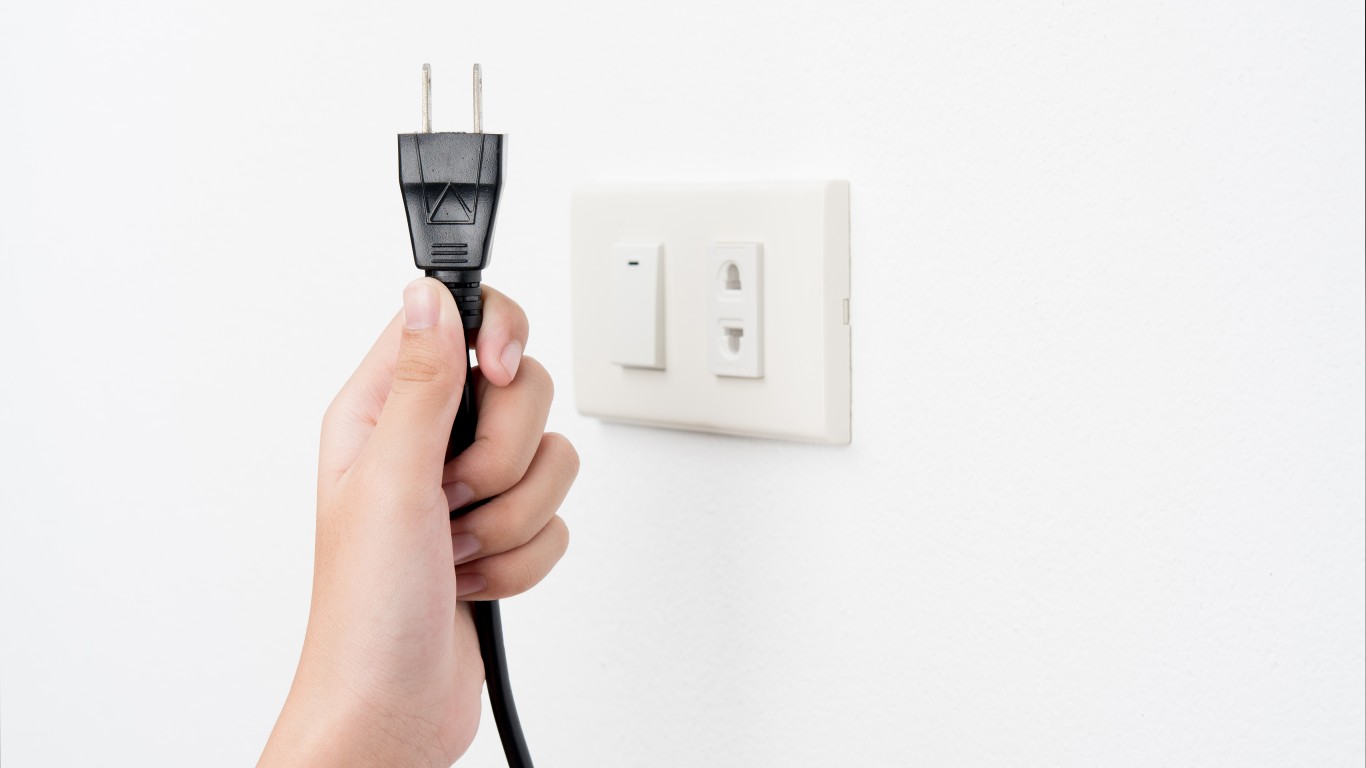
16. Unplug electronics
Even when not in use, many electronic devices, including televisions, microwaves, scanners, and printers, use standby power to save warm-up time. In the United States, the total electricity consumed by idle electronics — sometimes referred to as vampire or phantom electricity — equals the annual output of 12 power plants, according to the Office of Sustainability at Harvard University. Use power strips for these devices to simplify plugging and unplugging.
[in-text-ad]

17. Turn off your computer
It is true that your computer uses a surge of electricity when it starts up, but it’s a small surge. The Department of Energy suggests that you turn off your monitor if you aren’t going to use your PC for more than 20 minutes, and turn off your CPU and monitor if you’re not going to use your PC for more than 2 hours.

18. Rein in heating and cooling
Combined, heating and cooling accounts for nearly half of household energy consumption. You can reduce energy consumption and save money by using a programmable thermostat. For every degree you reduce the temperature in the winter or raise it in the summer you are saving up to 1% in energy costs for each 8-hour period, according to the Department of Energy. Lowering your heating setting or raising your air conditioning settings by 10 degrees for eight hours a day could save you 10% on your energy bill — and reduce your carbon footprint.
There is added efficiency in doing this, in that lower interior temperatures in winter will slow the flow of heat to the outdoors, and higher interior temperatures in summer will slow the flow of heat into the house.

19. Eat healthier
You will reduce your carbon footprint if you limit the amount of meat and dairy you consume. Animal-derived food production has a much higher greenhouse gas output than grain and vegetable production because of the highly inefficient transfer of plant energy to animal energy. Depending on how it’s measured, animal-based agriculture is responsible for about 15% of all worldwide GHG emissions, according to the Food and Agriculture Organization of the United Nations.
You don’t need to become a vegetarian or a vegan to reduce your foodprint. By eating chicken instead of beef for one year, you will reduce carbon dioxide emissions by 882 pounds, and by having just one vegetarian meal a week you could save the GHG equivalent of driving 1,160 miles, according to the Center of Sustainable Systems at the University of Michigan.
[in-text-ad-2]

20. Choose local and organic
Growing organic food is labor intensive but requires 30%-50% less energy to produce.
Eating locally-grown food also saves energy because of the lower transportation costs. Eating all locally-grown food for one year could save the GHG equivalent of driving 1,000 miles, according to the Center of Sustainable Systems at the University of Michigan.
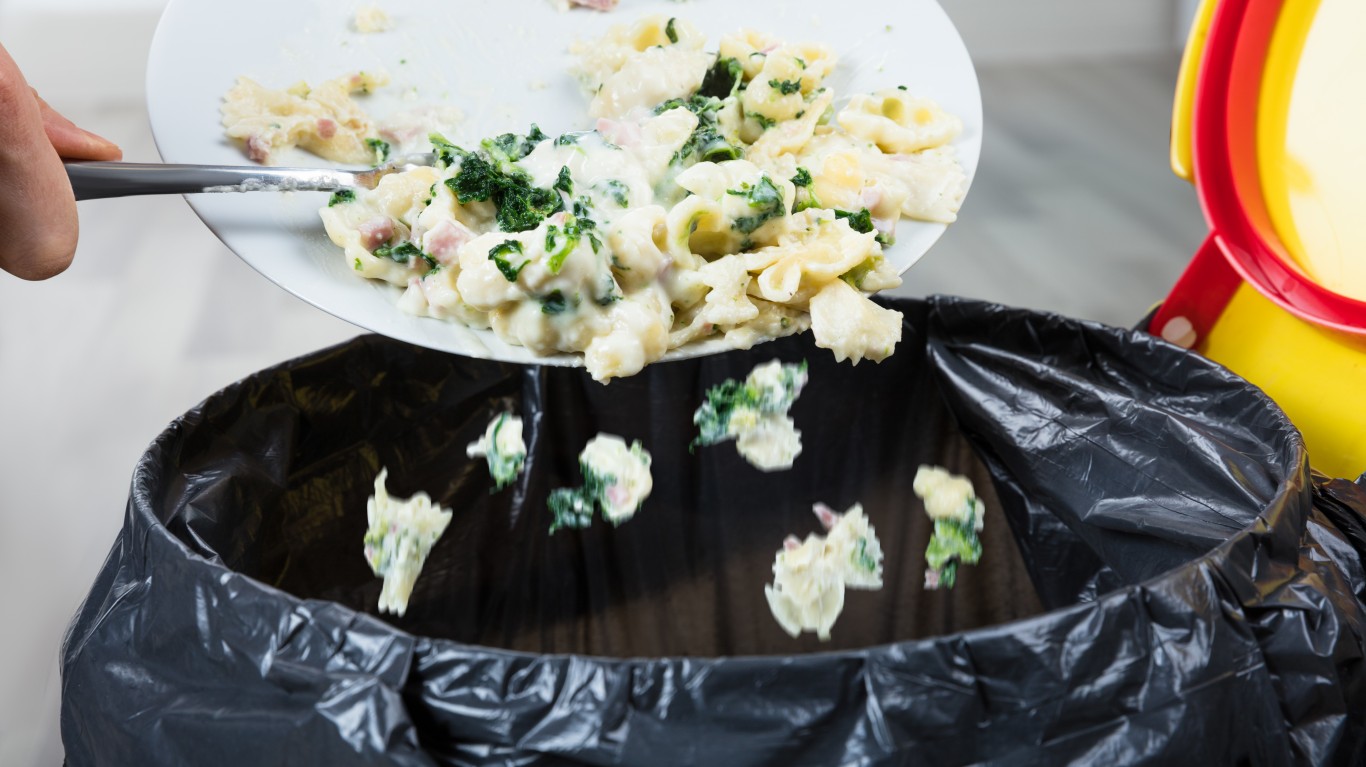
21. Stop throwing out food
According to a 2012 study by The Natural Resource Defense Council, American families throw out approximately 25% of the food and beverages they buy, costing the average family of four between $1,365 and $2,275 every year — even more in today’s dollars. There are also energy, production costs, and resources involved in the production and transport of this thrown food. You can save these by matching your food purchases to your actual consumption through menu planning and grocery lists.
[in-text-ad]
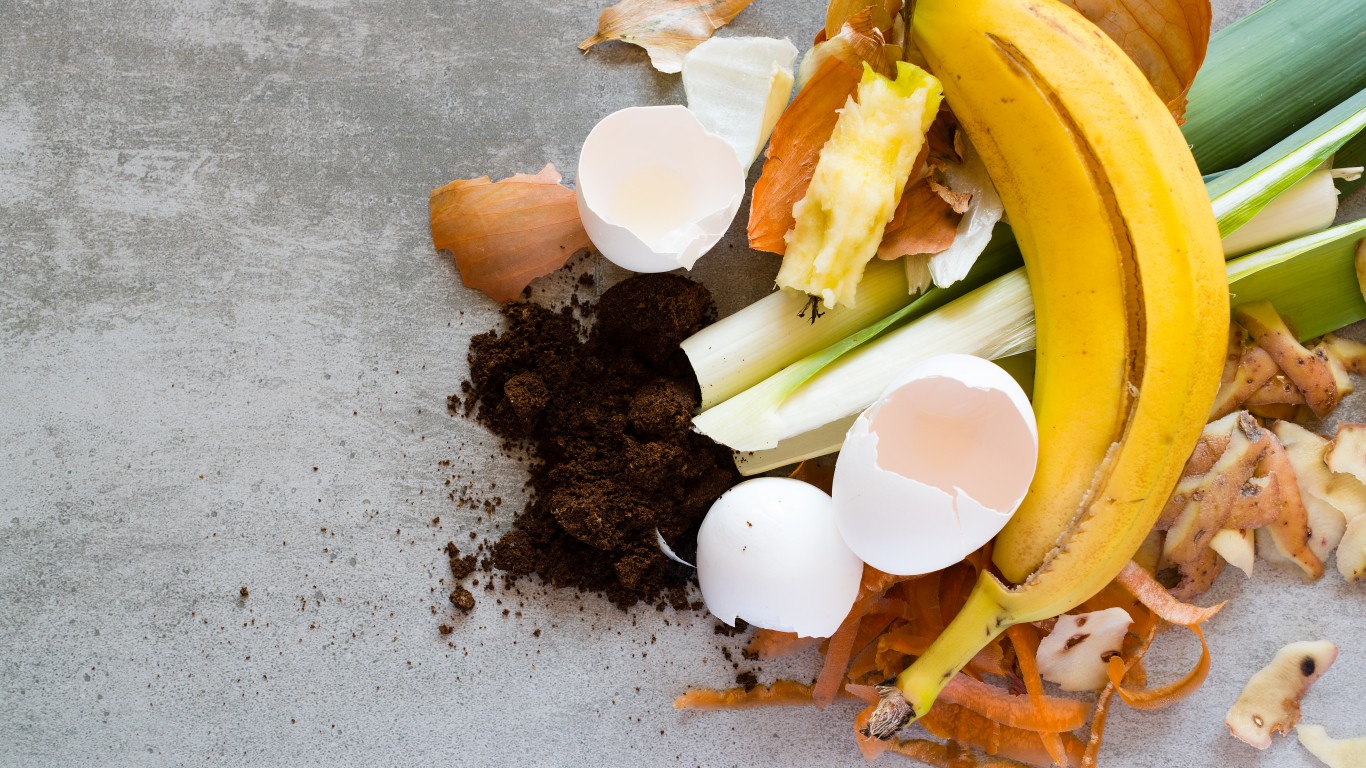
22. Compost
Nearly 30% of the waste stream consists of food and yard waste, according to the EPA. Over 50 million tons go to a landfill or incinerator. Composting not only saves disposal costs — and reduces the methane emitted from landfills — but it also creates a valuable soil amendment, reducing the need for manufactured fertilizers. You don’t need to have a lot of land or technology to compost your household food and yard waste, so long as you follow a simple formula and keep meat, bones and dairy products out of the mix.

23. Save water
Using less water saves energy and infrastructure costs. Saving water also means less water is lost to contamination, and it helps assure an adequate supply of clean water for the future. In your own household you can conserve outdoor water use by mulching your gardens, keeping your grass a little longer, and washing your car on the lawn. Indoors, simply keep the water off when you are not actively using it, like when washing dishes, brushing your teeth, or generally cleaning up. Try this in the shower by turning the water on to the lather up, off while scrubbing up, and on again for the rinse. Shorter showers are good too.
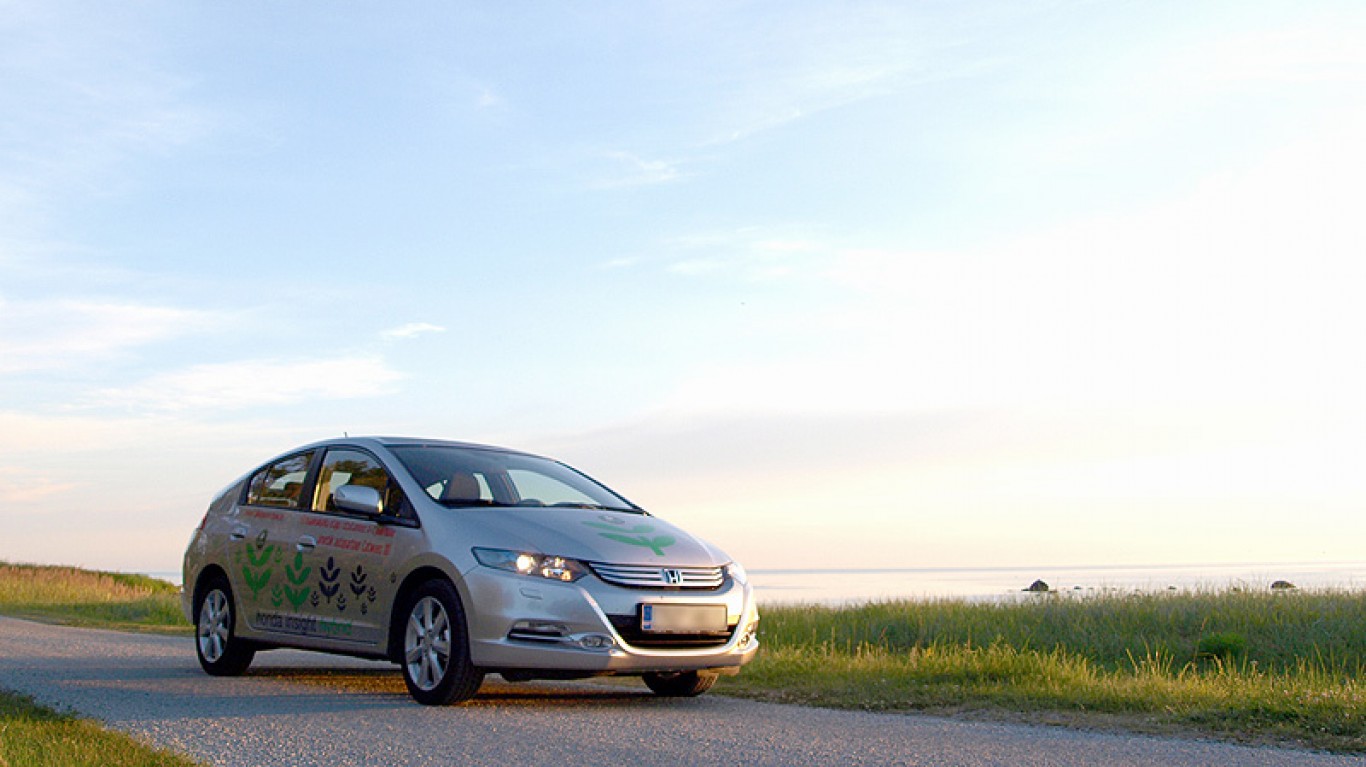
24. Buy a cleaner car
Vehicles produce about one-third of all U.S. air pollution, and the contaminants emitted are more of a health threat than those from smoke stacks because they are at ground level, where we live, work, and play. Cars and trucks also account for 23% of total U.S. GHG emissions, with the average passenger vehicle producing about 4.6 metric tons of carbon dioxide per year, according to the EPA.
Buying a fuel-efficient car reduces air pollution and your carbon footprint, and can also save you money. The difference between a car that gets 20 miles per gallon (mpg) and one that gets 30 mpg amounts to about $708 in fuel costs per year, or $3,538 over five years. The U.S. Department of Energy has an online calculator that allows you to assess the efficiency of your car and compare it to others, including hybrids and all electric cars.
[in-text-ad-2]

25. Drive efficiently
Fast accelerations and high speeds use up fuel, and abrupt stops waste energy. By driving gently you can lower your gas mileage by up to 33% on the highway and 5% in the city, according to the Department of Energy. The optimal highway speed for gas mileage is 50 mph; after that, your gas mileage drops quickly. Don’t idle your car, especially while running the air conditioner. In the winter, give your car only 30 seconds to warm up — it will warm up quickly when you start driving. Regular maintenance will help your car run at top efficiency — fixing serious maintenance problems can improve mileage by up to 40%.

26. Leave your car home
While great strides have been made to reduce tailpipe emissions — 99% since the 1960s — we are driving more than ever. There are more cars on the road than there are licensed drivers, and each vehicle emits about 4.6 metric tons of carbon dioxide per year.
Whenever you avoid getting into your car, you are doing the environment a favor. Walk or bike when you can, and use public transportation where you can’t. Find companionable people who make the same routine trips you do and form a carpool. Rather than taking short trips to do your errands, combine your trips, thereby reducing mileage and avoiding a number of cold starts.
[in-text-ad]

27. Consider alternatives to air travel
Air travel represents a growing percentage of the world’s greenhouse gases. If you take a round-trip flight between New York and San Francisco, or to Europe, your travel represents the environmental release of up to 2 or 3 tons of carbon dioxide per person, compared to the 19 tons generated by the average American per year. (The average European generates 10.) In business, you can reduce your company’s flights by sending fewer people to events, using video conferencing, and communicating using a variety of online tools.
For pleasure travel, consider alternating “staycations” with travel vacations. Generally speaking, the energy intensity per passenger mile of air travel is comparable to driving an SUV or to taking a train. Driving with passengers (a family road trip) or in a hybrid car will make your travel much more efficient than any other transportation option.

28. Green your school
Work with your local school administrators and PTAs to shrink the carbon footprint of your child’s school through architectural design, waste management, cafeteria choices, and energy conservation. Involve students in green programs, such as student-maintained gardens, cafeteria composting, and initiatives to reduce energy use and waste. Environmental projects are fun, and will raise awareness in parents, school personnel and children alike.

29. Involve the workforce
Join or start a workplace environmental committee to work with your company in making environmental impacts a consideration in everyday operations, by, for example, facilitating telecommuting and carpooling, reducing paper use, and providing drinking glasses instead of bottled water at meetings and events. Make sure someone has the responsibility of turning off electronics, lights, and heat in the evening and encourage the proliferation of green plants to improve air quality.
[in-text-ad-2]
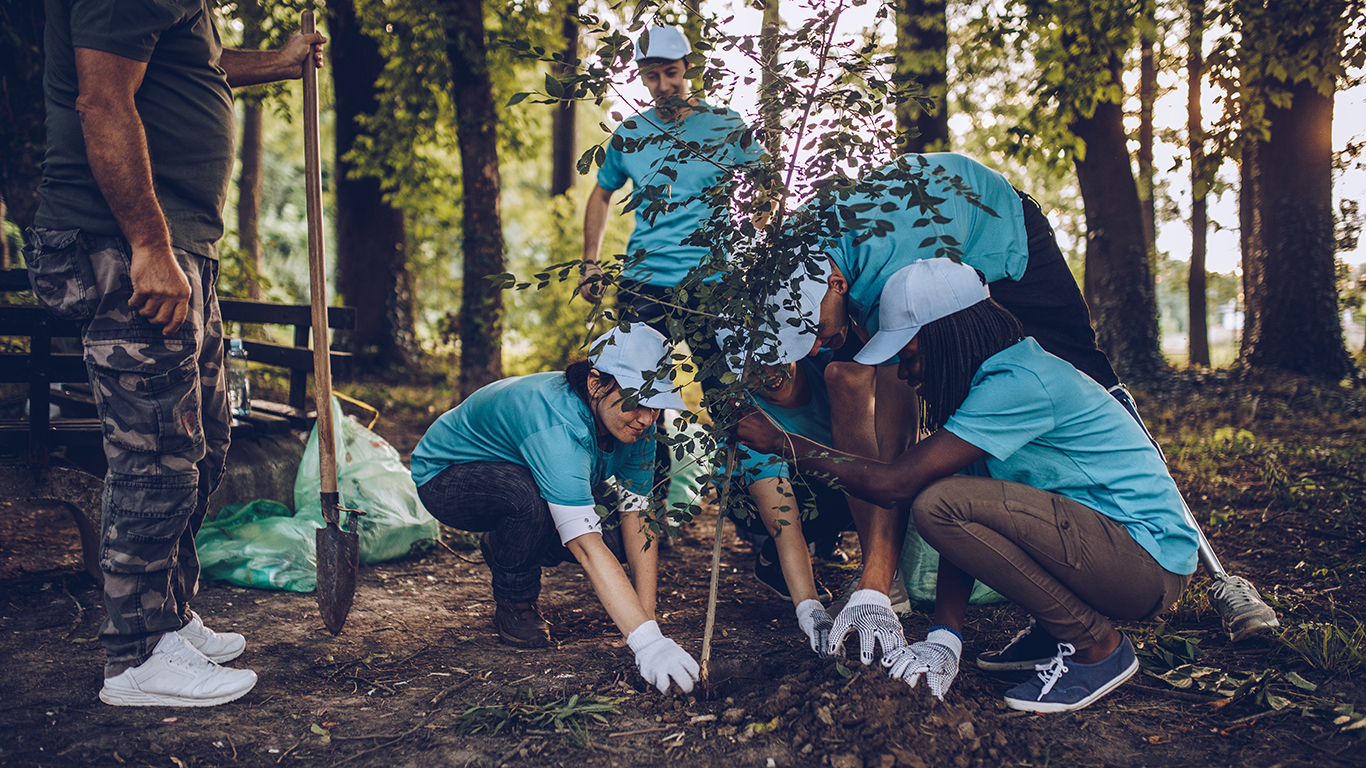
30. Volunteer
Many environmental groups, land conservancies and other environmental stewardship organizations have volunteer programs. Whether it is picking up litter, fund-raising, clearing trails, stuffing envelopes, or educating others, by volunteering you will meet new people, stay on top of current environmental issues, and make a difference in protecting our one world.
100 Million Americans Are Missing This Crucial Retirement Tool
The thought of burdening your family with a financial disaster is most Americans’ nightmare. However, recent studies show that over 100 million Americans still don’t have proper life insurance in the event they pass away.
Life insurance can bring peace of mind – ensuring your loved ones are safeguarded against unforeseen expenses and debts. With premiums often lower than expected and a variety of plans tailored to different life stages and health conditions, securing a policy is more accessible than ever.
A quick, no-obligation quote can provide valuable insight into what’s available and what might best suit your family’s needs. Life insurance is a simple step you can take today to help secure peace of mind for your loved ones tomorrow.
Click here to learn how to get a quote in just a few minutes.
Thank you for reading! Have some feedback for us?
Contact the 24/7 Wall St. editorial team.
 24/7 Wall St.
24/7 Wall St. 24/7 Wall St.
24/7 Wall St.
